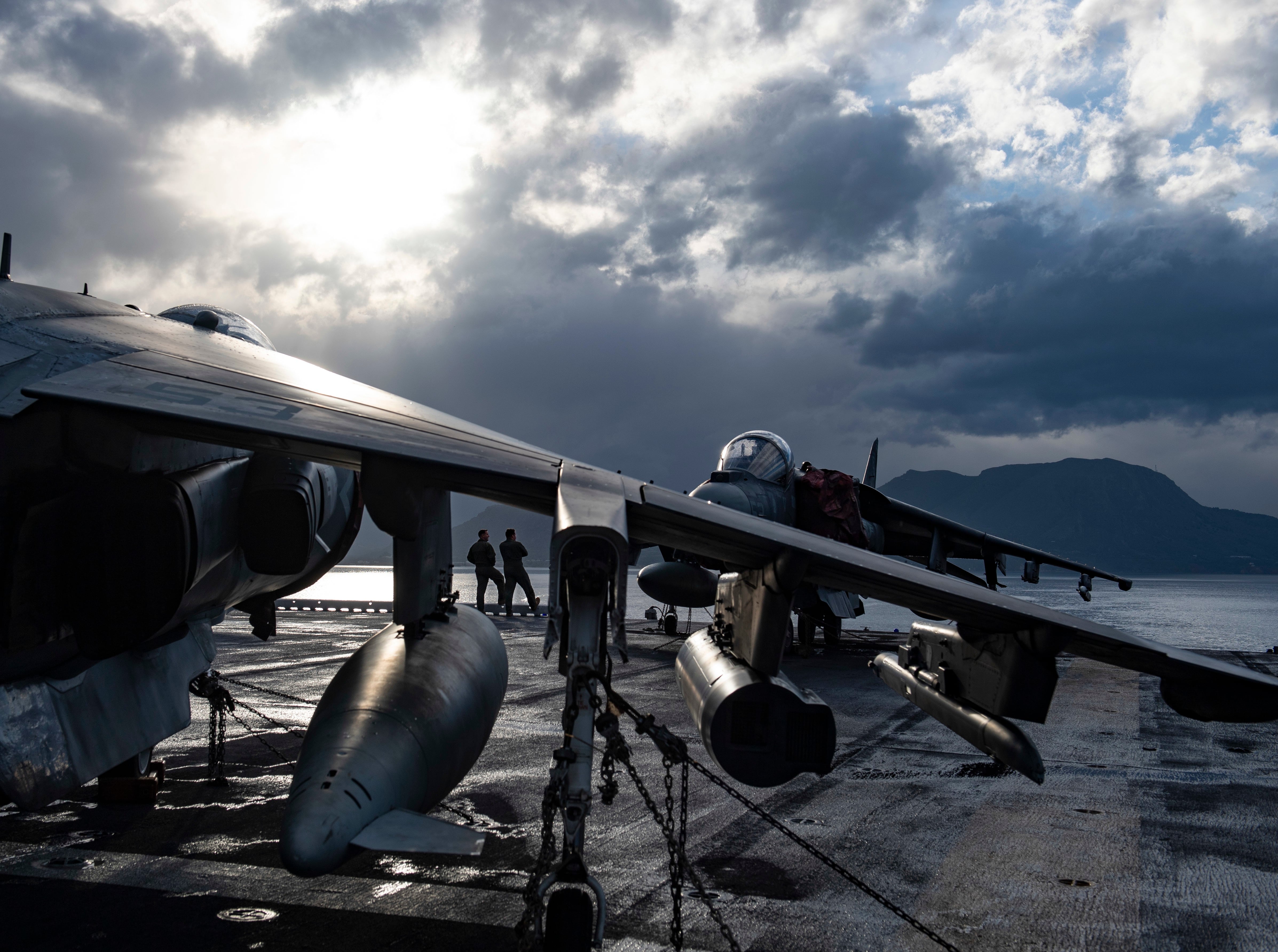On Thursday the Marine Corps held a sunset ceremony for Marine Attack Squadron 311, or VMA-311, as the Corps looks to move from the AV-8B Harrier to the F-35 Lightning, according to the Marine Corps.
The unit, known for a number of historic firsts, will merge with one of the Marine Corps' most famous squadrons: VMA-214, the Black Sheep, according to a Marine Corps press release.
Eventually VMA-214 also will sundown and a new unit Marine Fighter Attack Squadron 311 will be formed to fly the F-35B Lightning out of Marine Corps Air Station Miramar, California, a representative from the 3rd Marine Air Wing said.
Marine Attack Squadron 311, the Tomcats, was first formed in 1942 at Cherry Point, North Carolina, and almost immediately was outfitted with new F4U-1 Corsairs and shipped to the Pacific to fight the Japanese, according to the squadron’s history page.
RELATED

On Oct. 6, 1943, the squadron took part in one of the first catapult operations using Corsairs when they took off from the deck of the escort class carrier Nassau.
In 1948 the squadron made history again when the Tomcats were the first squadron in the Marine Corps to receive jets, according to the history page.
Those jets were put to good use during the Korean War as the squadron flew 18,851 close-air support sorties in two and a half years, including missions that supported the 8th Army during its time in the Chosin Reservoir, the page said.
The squadron continued to provide close-air support through the Vietnam War, which saw it fly 54,625 sorties, the history page said.
The squadron continued to rack up historical firsts: The first squadron to fly the AV-8B Harrier in combat during Operation Desert Shield, the first squadron to use Harriers in Afghanistan and then to participate in the first combat sortie of Operation Iraqi Freedom.
“The reputable Tomcats have an exceptional level of esprit de corps representing 78 years of superior performance,” the squadron’s sergeant major, Sgt. Maj. Colin Barry, said in a press release.
“The Tomcats imbued a level of morale within each other that was unmatched, but I have no doubt the newly adopted VMA-214 Black Sheep identity will be embraced, and they will continue performing remarkably.”
The Black Sheep squadron was also created in 1942 and quickly rose to fame as one of the most effective Marine Corps fighter squadrons in World War II.
In 1976 NBC premiered “Baa Baa Black Sheep” a military drama and comedy show about the squadron’s exploits and its famous first commander Maj. Gregory “Pappy” Boyington.
The squadron received its unusual nickname from the unique way it was created in 1943, according to the unit’s history page.
Boyington, returning to the Corps after a year fighting the Japanese in China as part of the Flying Tigers, took charge of 27 unassigned pilots and in under four weeks had them trained and ready to fight the Japanese, according to the history page.
Flying the F4-U Corsair the squadron damaged or destroyed 203 Japanese planes, had 97 confirmed air-to-air kills and produced eight aces. Boyington was awarded the Medal of Honor for his role in training and leading the squadron into battle, the unit’s history page said.
Both VMA-214 and VMA-311 are part of Marine Air Group 13 based out of Marine Corps Air Station Yuma, Arizona.
After VMA-311′s sunset, VMA-214 is the only squadron in MAG-13 still flying the AV-8B Harrier, Capt. Joseph Butterfield, a Marine Corps spokesman told Marine Corps Times in a Friday email.
Three other active fleet squadrons ― VMA-542, VMA-223 and VMA-231 ― and one training squadron ― VMAT-203 ― all based out of Marine Corps Air Station Cherry Point, North Carolina, are still using the AV-8B Harrier, Butterfield said.




